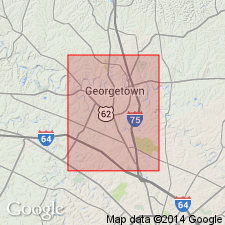
- Usage in publication:
-
- Salvisa [bed]
- Modifications:
-
- Named
- Dominant lithology:
-
- Limestone
- AAPG geologic province:
-
- Cincinnati arch
Summary:
Named Salvisa [bed] of Perryville [member] of Lexington (Trenton) [formation]. Dove-colored limestone with "birdseye" characteristics; fine grained and usually exhibits a conchoidal fracture. Underlain by Faulconer [bed] and overlain by Cornishville [bed] of Perryville [member].
Source: GNU records (USGS DDS-6; Reston GNULEX).
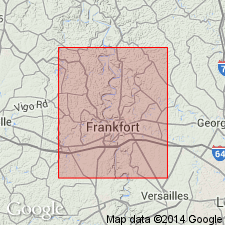
- Usage in publication:
-
- Salvisa bed
- Modifications:
-
- Revised
- AAPG geologic province:
-
- Cincinnati arch
Summary:
Designated Salvisa bed of Perryville member of Lexington (Trenton) formation. Light colored, fine grained, compact "birdseye" limestone. Maximum of 20 ft in thickness. Underlain by Faulconer bed of Perryville member; overlain by Cynthiana member of Cincinnati formation.
Source: GNU records (USGS DDS-6; Reston GNULEX).
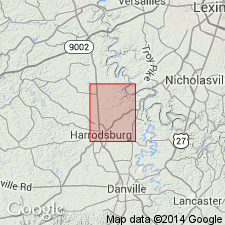
- Usage in publication:
-
- Salvisa Bed*
- Modifications:
-
- Revised
- AAPG geologic province:
-
- Cincinnati arch
Summary:
Designated Salvisa Bed of Perryville Limestone Member of Lexington Limestone. "Limestone, light-gray to yellowish-gray, cryptograined, subconchoidal fracture; contains small rods and specks of clear calcite; interbedded with brownish-gray to olive-gray micrograined limestone in even to slightly irregular beds mostly 0.8 to 1.0 foot thick. Contains some limy shale, having chocolate-brown to brownish-gray partings." 0 to 19 ft thick. Underlain by and grades laterally into Tanglewood Member of Lexington Limestone; overlain by Cornishville Bed of Perryville.
Source: GNU records (USGS DDS-6; Reston GNULEX).
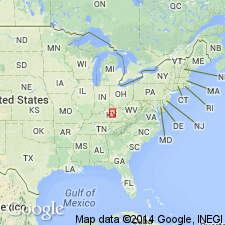
- Usage in publication:
-
- Salvisa Bed*
- Modifications:
-
- Overview
- AAPG geologic province:
-
- Cincinnati arch
Summary:
Comprehensive general description of Salvisa Bed including lithology, paleontology, areal distribution, environment of deposition, and stratigraphic setting.
Source: GNU records (USGS DDS-6; Reston GNULEX).
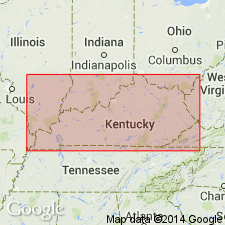
- Usage in publication:
-
- Salvisa Bed*
- Modifications:
-
- Overview
- AAPG geologic province:
-
- Cincinnati arch
Summary:
Comprehensive general description of Salvisa Bed. Includes information about history of name, lithology, thickness, areal distribution, and stratigraphic setting.
Source: GNU records (USGS DDS-6; Reston GNULEX).
For more information, please contact Nancy Stamm, Geologic Names Committee Secretary.
Asterisk (*) indicates published by U.S. Geological Survey authors.
"No current usage" (†) implies that a name has been abandoned or has fallen into disuse. Former usage and, if known, replacement name given in parentheses ( ).
Slash (/) indicates name conflicts with nomenclatural guidelines (CSN, 1933; ACSN, 1961, 1970; NACSN, 1983, 2005, 2021). May be explained within brackets ([ ]).

